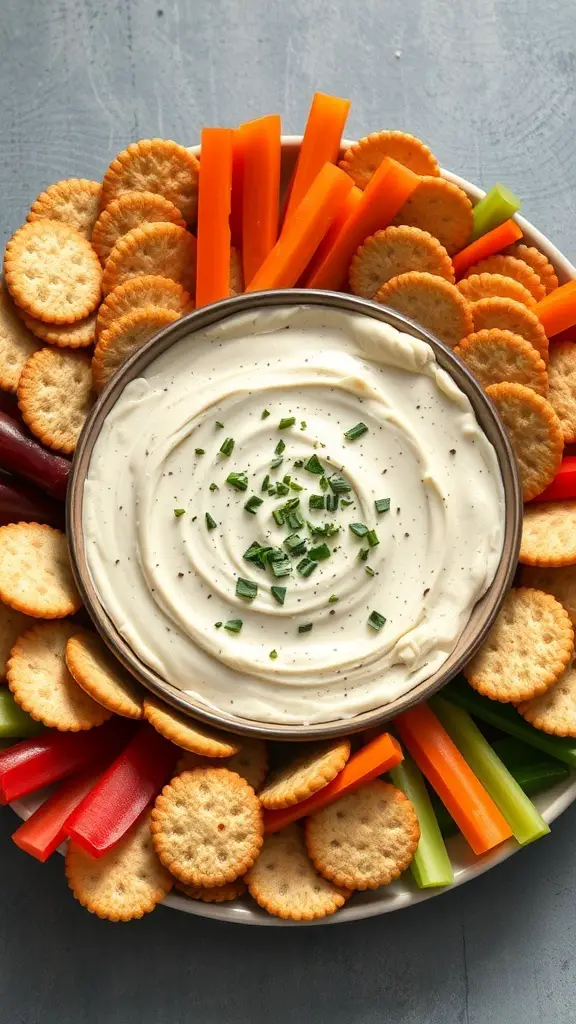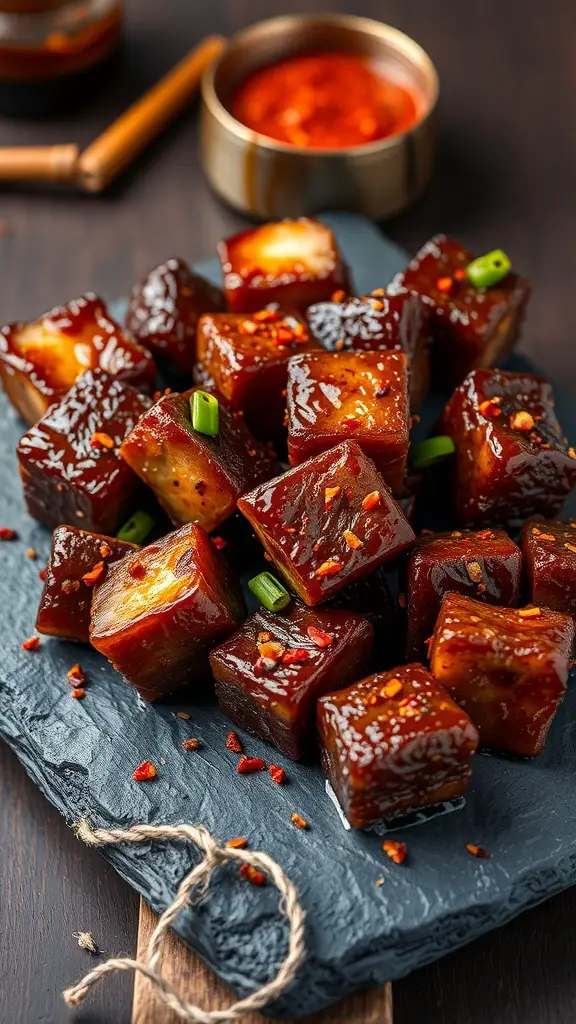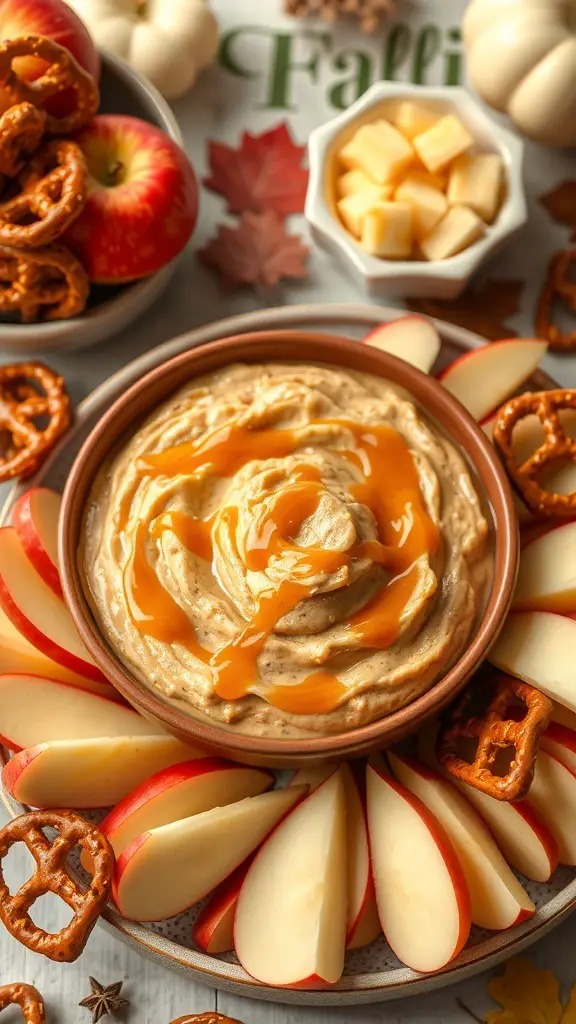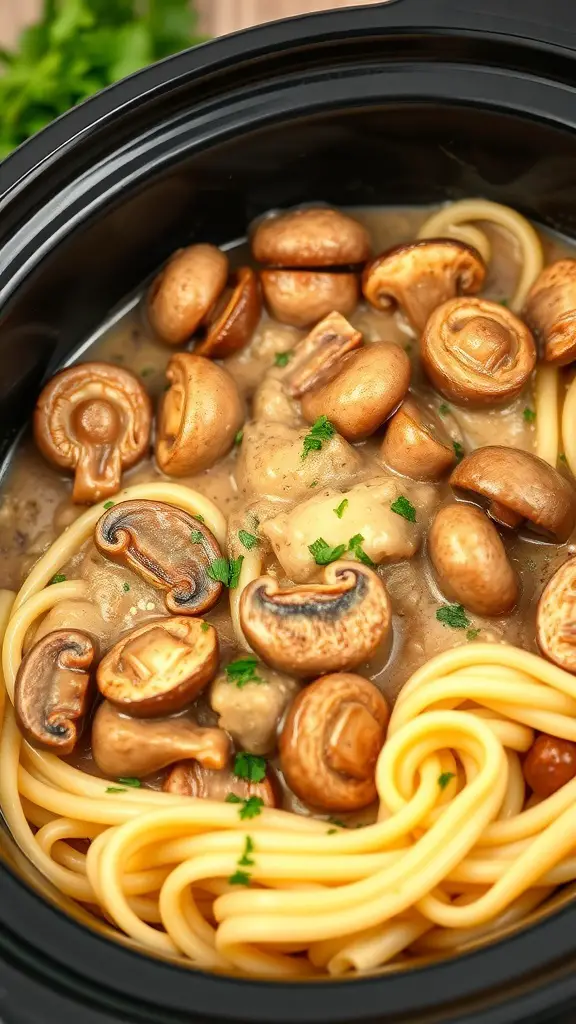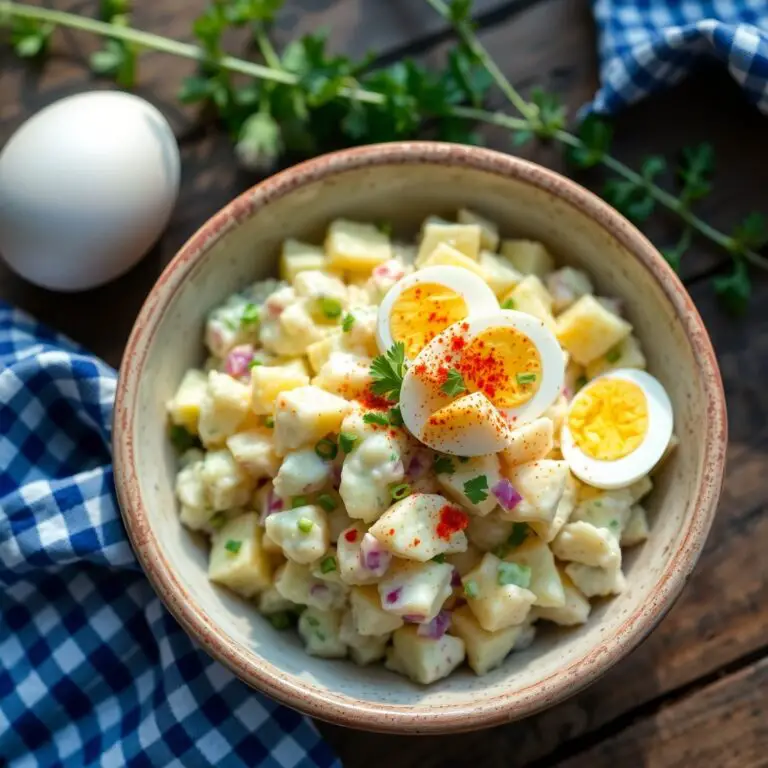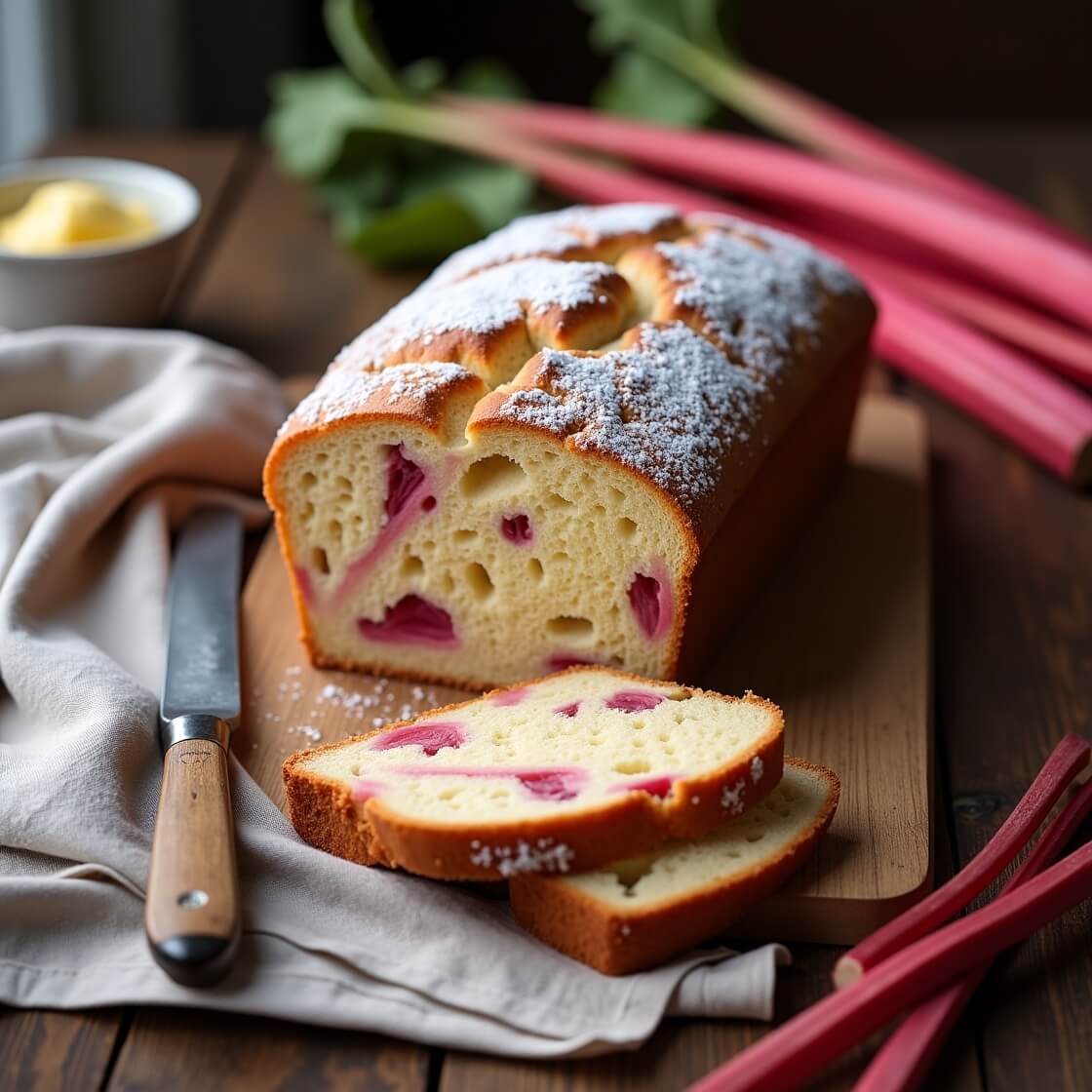
There’s something timeless about baking with rhubarb. Maybe it’s the way the tartness dances with sugar, or how its vivid pink hue peeks through golden crusts. I first made this rhubarb bread on a breezy spring afternoon, right after gathering some stalks from a neighbor’s overflowing garden bed. It was an experiment meant to use up the season’s bounty—but what emerged from the oven was something I hadn’t expected: warm, moist, and utterly addictive.
This recipe was born out of necessity and turned into a family favorite. Whether you’re familiar with rhubarb or just starting to explore its potential, this bread is an invitation to discover how a humble vegetable (yes, rhubarb is a vegetable!) can elevate your baking game.
Read on—you’re going to fall in love with this one.
Why I Love This Recipe
This isn’t your average sweet bread. The charm of rhubarb bread lies in its delicate balance of sweet and tangy. Each bite is tender and moist, with just enough crumble. The soft interior is speckled with tart rhubarb bits that melt into the batter, creating a surprising brightness.
What really sets this apart is how it surprises people. Rhubarb? In bread? They don’t expect it to be this good. But then they try it—and instantly ask for the recipe.
It’s also incredibly versatile. You can serve it warm for breakfast with a pat of butter, toasted with cream cheese for a snack, or as a simple dessert with a dusting of powdered sugar or a scoop of vanilla ice cream.
This recipe is also a wonderful way to introduce picky eaters to rhubarb. It tempers its sharpness, allowing the natural flavors to shine in a cozy, cinnamon-laced loaf.
If you love banana bread or zucchini bread, you’ll love rhubarb bread even more. It has a rustic charm, the kind of loaf you bring to a friend’s house or set out for a weekend brunch.
Ingredients for Rhubarb Bread
Before we get into the full process, let’s talk ingredients—because that’s where the magic begins.
Rhubarb bread uses pantry staples, with the rhubarb being the hero that brings everything together. You don’t need anything fancy, and if you’re a regular home baker, you probably have most of this on hand.
Here’s a breakdown of what you’ll need:
- Fresh Rhubarb: The star of the show. You’ll want about 1 ½ cups, chopped into small pieces. The tartness balances beautifully with the sweetness of the batter. If you’re using frozen rhubarb, thaw and drain it first.
- All-Purpose Flour: Provides the structure for the bread.
- Granulated Sugar: Sweetens the loaf while allowing the rhubarb’s tartness to still shine.
- Baking Soda & Baking Powder: A mix of both gives the perfect rise and crumb.
- Salt: Just a pinch to enhance the overall flavor.
- Ground Cinnamon: Adds warmth and depth.
- Eggs: For binding and richness.
- Buttermilk: Tenderizes the crumb and reacts with the baking soda for a light texture. Don’t have buttermilk? No problem—we’ll talk substitutions soon.
- Vegetable Oil: Keeps the loaf moist and tender.
- Vanilla Extract: Adds subtle fragrance and flavor.
Optional:
- Chopped nuts (like walnuts or pecans): For a bit of crunch.
- Brown sugar topping: Adds a slight crunch and caramelized edge on top.
Each of these ingredients plays a role in building the perfect loaf—moist, flavorful, and just sweet enough.
How Much Time Will You Need
This is a relaxed recipe—you can make it on a weekend morning or even after dinner if you’re craving something cozy and homemade.
Here’s a rough breakdown:
- Prep time: 15 minutes
- Bake time: 50 to 60 minutes
- Cooling time: 15–20 minutes
In just about 90 minutes total (most of which is hands-off), you’ll have a stunning loaf that fills your kitchen with the smell of cinnamon, sugar, and rhubarb.
How to Make This Rhubarb Bread

This recipe doesn’t require a stand mixer or any special equipment—just bowls, a whisk, and a loaf pan. Here’s your step-by-step guide to nailing it the first time:
Step – 1: Preheat Your Oven and Prep Your Pan
Start by preheating your oven to 350°F (175°C). Grease a standard 9×5-inch loaf pan with oil or non-stick spray, and line the bottom with parchment paper for easy removal.
Step – 2: Chop the Rhubarb
Wash your rhubarb thoroughly, trim off the ends, and chop into ½-inch pieces. If the stalks are especially thick, slice them lengthwise first, then chop. Set aside.
Step – 3: Mix Dry Ingredients
In a large mixing bowl, whisk together the flour, baking powder, baking soda, salt, and cinnamon. This ensures even distribution of the leavening agents and spices.
Step – 4: Combine Wet Ingredients
In a separate bowl, whisk the eggs with the sugar until light and frothy. Add in the buttermilk, oil, and vanilla extract. Stir until everything is fully combined.
Step – 5: Bring It All Together
Pour the wet ingredients into the bowl with the dry ingredients. Stir gently with a spatula until just combined—do not overmix. Fold in the chopped rhubarb and nuts (if using) at the end.
Step – 6: Pour Into Pan and Top It Off
Spoon the batter into your prepared loaf pan and smooth the top. If you like, sprinkle a tablespoon of brown sugar across the top. It adds a subtle crunch and visual appeal.
Step – 7: Bake
Place the pan on the middle rack of your oven and bake for 50–60 minutes. You’ll know it’s ready when a toothpick inserted into the center comes out clean or with a few moist crumbs.
Step – 8: Cool Before Slicing
Let the loaf cool in the pan for 10–15 minutes, then lift it out and transfer to a wire rack to cool completely. This step helps the structure set and makes for cleaner slices.
Substitutions
Rhubarb bread is wonderfully adaptable, which means even if you’re missing an ingredient, you likely won’t have to run to the store.
Here are some handy swaps:
- Buttermilk: Mix 1 tablespoon of lemon juice or white vinegar with 1 cup of milk. Let sit for 5 minutes to curdle—voila, homemade buttermilk!
- Vegetable Oil: Canola oil or melted coconut oil also work. For a lighter option, use unsweetened applesauce for half the oil.
- Eggs: Substitute each egg with a flax egg (1 tablespoon flaxseed + 2.5 tablespoons water, mixed and rested for 5 minutes) for a vegan version.
- Sugar: You can use coconut sugar or light brown sugar for a more caramel-like flavor.
- Flour: A 1:1 gluten-free flour blend will work if you’re avoiding gluten—just check that it includes xanthan gum.
These substitutions not only make the recipe more accessible but can tailor it to dietary needs or what you have in your pantry.
Best Side Dishes for Rhubarb Bread
While rhubarb bread is satisfying on its own, pairing it with the right accompaniments can make it even more enjoyable.
Here are three side dish ideas to round out your table:
- Greek Yogurt and Honey: A dollop of thick yogurt drizzled with honey brings creamy richness that complements the tangy-sweet bread.
- Scrambled Eggs with Herbs: For a savory contrast, serve with soft scrambled eggs infused with fresh chives or dill.
- Fruit Salad: A refreshing bowl of berries, melon, and citrus rounds out a brunch or light lunch beautifully.
Serving and Presentation Tips
Make the moment special—because great food deserves a beautiful stage.
Rhubarb bread isn’t just delicious; it has a rustic charm that makes it visually appealing even before the first bite. A few thoughtful touches can turn this simple loaf into the centerpiece of a brunch or dessert table.
Here’s how to serve and present it like a pro:
- Serve it warm: Slightly warmed slices intensify the flavor and texture. Use a toaster oven or pop them into the microwave for 10–15 seconds.
- Add a dusting of powdered sugar: A light snowfall over the top adds visual contrast and a whisper of sweetness.
- Slice cleanly: Use a serrated knife and allow the loaf to cool fully before cutting. Wipe the blade between slices for a neat presentation.
- Garnish with fresh rhubarb or mint sprigs: A few curls of raw rhubarb or a tiny bouquet of mint on the serving plate enhances the rustic appeal.
For entertaining, serve on a wooden board with a small dish of whipped butter or cream cheese on the side—simple, elegant, and unforgettable.
Tips and Tricks to Make This Recipe Better
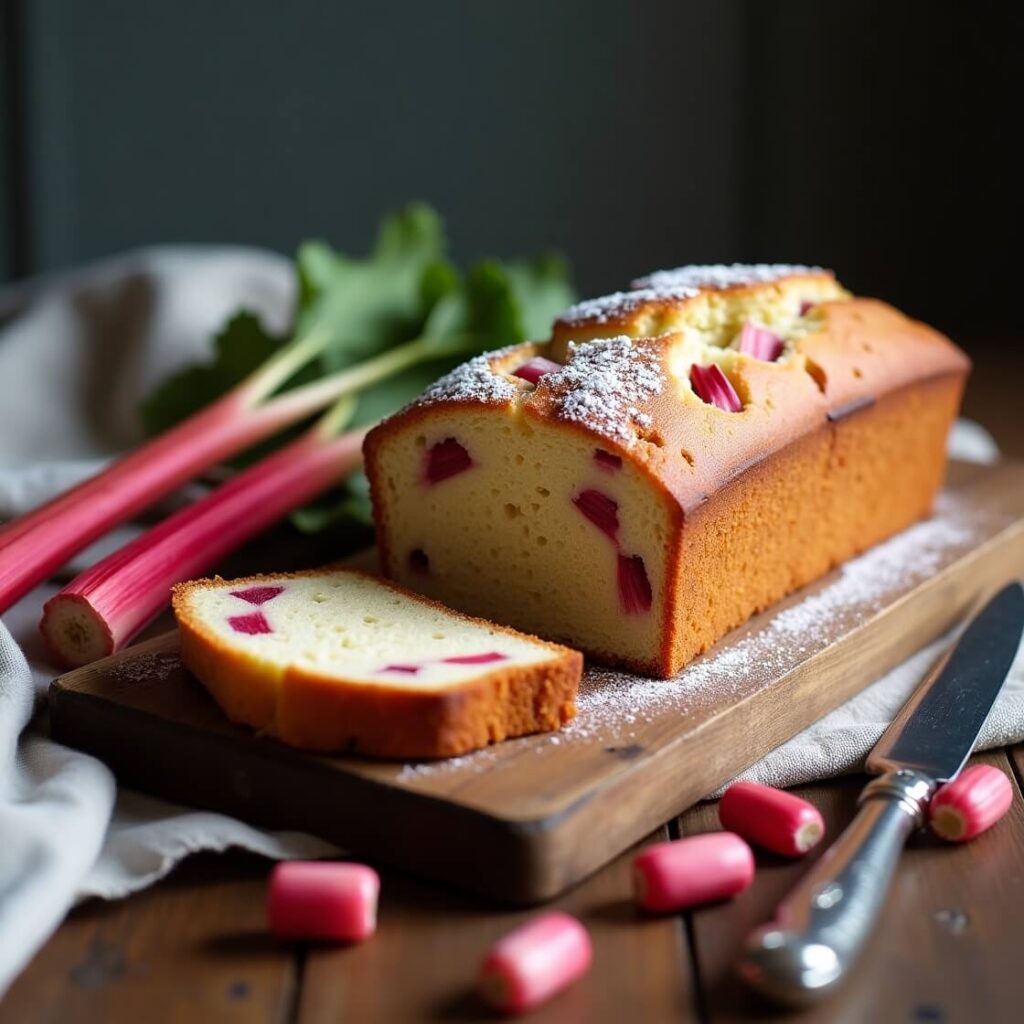
The secret to bakery-style rhubarb bread is all in the details.
Whether it’s your first time or your fiftieth, these tips ensure success every time:
- Use fresh rhubarb when in season: Spring and early summer rhubarb has the best flavor and color. Look for firm, crisp stalks with vibrant hues.
- Cut rhubarb evenly: Uniform pieces cook more evenly and create better texture in each bite.
- Avoid overmixing: Stir just until the ingredients are combined. Overmixing leads to a tough or dense loaf.
- Let it rest before slicing: Even though the smell will tempt you, give the bread time to cool and set. It slices better and tastes even better when rested.
- Make two loaves: This freezes beautifully, and once you taste it, you’ll wish you had extra on hand.
Common Mistakes to Avoid
A few simple missteps can turn this gorgeous loaf into a disappointment. Here’s what to watch for:
- Skipping the parchment paper: This may seem like a shortcut, but parchment guarantees the loaf lifts out cleanly—no sticking, no breaking.
- Using too much rhubarb: It’s tempting to add more, but too much moisture can make the bread soggy.
- Baking at too high a temperature: It might brown too fast and underbake in the middle. Stick with 350°F (175°C) and check with a toothpick.
- Cutting too soon: Let it cool. If you slice it hot, the structure won’t be set and the slices can collapse.
- Not adjusting for frozen rhubarb: If using frozen, thaw and drain well to avoid excess moisture in the batter.
How to Store It
Storage is key if you want to savor the flavor over several days—or weeks.
- At room temperature: Wrap in plastic wrap or foil and keep in an airtight container. It stays moist for up to 3 days.
- In the fridge: For longer storage (up to 6 days), refrigerate in a sealed container. Let it come to room temp or warm slightly before serving.
- Freezing: Wrap the entire loaf or individual slices tightly in plastic wrap, then foil. Store in a ziplock freezer bag for up to 3 months. Thaw overnight in the fridge or warm from frozen in a toaster oven.
FAQ
Let’s answer some common questions that pop up about rhubarb bread:
Can I use frozen rhubarb?
Yes! Just thaw it completely and pat dry to remove excess moisture before adding to the batter.
Is rhubarb safe to eat raw?
Yes, the stalks are edible and safe raw or cooked. Avoid the leaves—they are toxic.
Can I make this bread gluten-free?
Absolutely. Use a 1:1 gluten-free baking blend that includes xanthan gum for best results.
Can I turn this into muffins?
Yes! Scoop the batter into muffin tins and bake at 350°F for 18–22 minutes or until a toothpick comes out clean.
What if I don’t have buttermilk?
No problem. You can make your own by adding 1 tbsp of vinegar or lemon juice to 1 cup of milk and letting it sit for 5–10 minutes.
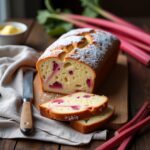
Rhubarb Bread
- Total Time: 1 hour 10 minutes
- Yield: 1 1x
- Diet: Vegetarian
Description
A tangy-sweet twist on traditional quick bread, this Rhubarb Bread is moist, fragrant, and packed with seasonal flavor. With the perfect balance of tart rhubarb and warm cinnamon, it’s the kind of recipe that feels nostalgic, cozy, and totally crowd-pleasing. Whether you’re serving it for brunch, dessert, or just alongside your morning coffee, this loaf is sure to become a new favorite. It’s simple to prepare, incredibly adaptable, and guaranteed to disappear fast.
Ingredients
- 1 ½ cups diced rhubarb (fresh or thawed from frozen)
- 2 cups all-purpose flour
- 1 cup granulated sugar
- ½ teaspoon salt
- 1 teaspoon baking soda
- 1 teaspoon baking powder
- 1 teaspoon ground cinnamon
- 2 large eggs
- 1 cup buttermilk
- ½ cup vegetable oil
- 1 teaspoon vanilla extract
- Optional: ½ cup chopped walnuts or pecans
- Optional: 1 tbsp brown sugar for topping
Instructions
- Preheat oven to 350°F (175°C). Grease and line a 9×5-inch loaf pan with parchment paper.
- Chop rhubarb into ½-inch pieces and set aside.
- In a large bowl, whisk together flour, baking soda, baking powder, salt, and cinnamon.
- In another bowl, beat the eggs and sugar until light and foamy. Add buttermilk, oil, and vanilla, and stir until combined.
- Gently fold wet ingredients into dry ingredients. Do not overmix.
- Fold in rhubarb and nuts (if using).
- Pour into prepared pan, smooth the top, and sprinkle with brown sugar if desired.
- Bake for 50–60 minutes or until a toothpick comes out clean.
- Cool in the pan for 10 minutes, then remove to a wire rack to cool completely.
Notes
- If using frozen rhubarb, thaw completely and blot dry before using.
- For added crunch, top with chopped nuts or raw sugar before baking.
- This loaf tastes even better the next day as the flavors deepen.
- Prep Time: 15 minutes
- Cook Time: 55 minutes
- Category: Breakfast, Snack, Dessert
- Method: Baking
- Cuisine: American
Nutrition
- Serving Size: 1
- Calories: 290
- Sugar: 22g
- Sodium: 210mg
- Fat: 11g
- Saturated Fat: 2g
- Unsaturated Fat: 9g
- Trans Fat: 0g
- Carbohydrates: 42g
- Fiber: 2g
- Protein: 4g
- Cholesterol: 35mg







